Unpleasant odors in HVAC systems can make any space feel uncomfortable and unclean. These smells often come from trapped moisture, mold growth, or lingering particles that circulate through the air. We can remove odors effectively by understanding the science behind how they form and how air systems carry them.

We explore how odors develop inside ducts, coils, and filters, and what happens at the molecular level when they stick to surfaces. By looking at proven scientific methods, we can see how certain technologies neutralize or break down odor-causing compounds instead of just masking them.
As we move through the key principles and advanced tools for odor removal, we also share best practices that keep air systems cleaner and safer. This knowledge helps us manage indoor air quality more effectively, especially after fire or water damage.
How Odors Form and Persist in HVAC Systems

Odors develop when organic and chemical compounds enter the air and interact with system components. They often linger because HVAC materials can trap and release these compounds over time, allowing unpleasant smells to circulate through indoor spaces.
Sources of Odors in HVAC Environments
Odors in HVAC systems usually come from biological growth, chemical emissions, and environmental contaminants. Moisture in ducts and coils supports mold and bacteria, which release musty smells. Dust and debris also collect in filters and vents, breaking down into odor-causing particles.
We often find volatile organic compounds (VOCs) from cleaning products, paints, and building materials. These gases can mix with humidity and heat, spreading through the air supply. Smoke, cooking fumes, and pet dander add more odor molecules that attach to system surfaces.
Common odor sources include:
| Source Type | Example | Odor Characteristic |
|---|---|---|
| Biological | Mold, bacteria | Musty, earthy |
| Chemical | VOCs, cleaning agents | Sharp, synthetic |
| Environmental | Smoke, food, pets | Lingering, oily |
Without regular maintenance, these materials build up and continue releasing odors even after the original source is gone.
Role of Porous Surfaces and Smoke Residue
Porous surfaces in HVAC systems, such as insulation, filters, and duct liners, absorb odor molecules easily. Once trapped, these compounds slowly release back into the airflow, making smells hard to remove. Materials like fiberglass and foam hold onto smoke residue and VOCs, especially after fires or long-term exposure to pollutants.
Smoke residue contains fine particles and oily films that cling to metal and plastic components. These residues react with moisture and heat, producing persistent odors that resist normal cleaning.
We often need deep cleaning or replacement of affected materials to restore air freshness. Using non-porous materials and activated carbon filters helps reduce reabsorption and improves long-term odor control.
Impact on Indoor Air Quality
Odor buildup directly affects indoor air quality by increasing airborne contaminants and discomfort. When HVAC systems recirculate air containing VOCs or biological particles, occupants may notice irritation, headaches, or fatigue.
Poor air quality also lowers system efficiency because filters clog faster and airflow decreases. Over time, this creates uneven temperature control and higher energy use.
We can maintain better air quality by cleaning ducts, replacing filters regularly, and using sensors to monitor VOC levels. These steps reduce odor persistence and keep the environment healthier for building occupants.
Scientific Principles of Odor Removal

We rely on physical and chemical processes to remove odors from HVAC systems. These processes capture, break down, or neutralize odor molecules to improve indoor air quality.
Adsorption and Absorption Mechanisms
Odor removal often starts with adsorption and absorption. In adsorption, gas or vapor molecules attach to the surface of a solid material. Activated carbon and activated charcoal filters use this process to trap volatile organic compounds (VOCs) and other odor-causing particles.
In absorption, odor molecules penetrate into the body of a material rather than staying on its surface. Baking soda and certain gels absorb moisture and odor molecules through chemical interaction or physical uptake.
These methods work best when air passes slowly through the filter, allowing more contact time between the air and the adsorbent. The efficiency depends on factors such as surface area, temperature, and humidity. Materials with a high surface area, like activated carbon, can capture more odor molecules before saturation.
| Mechanism | Example Material | Main Action |
|---|---|---|
| Adsorption | Activated Carbon | Molecules attach to surface |
| Absorption | Baking Soda | Molecules penetrate material |
Oxidation and Chemical Neutralization
Odor molecules can also be removed through oxidation and chemical neutralization. These processes change the chemical structure of odor compounds, turning them into less volatile or non-odorous substances.
Common oxidizing agents include ozone, hydrogen peroxide, and photocatalytic materials such as titanium dioxide. When exposed to light or air, these substances produce reactive oxygen species that break down organic molecules.
Chemical neutralizers work differently. Instead of destroying odor molecules, they react with them to form stable compounds that no longer emit strong smells. This approach is often used in HVAC treatments where introducing strong oxidizers might damage components or materials.
We must balance effectiveness with safety. Overuse of oxidizers can irritate the respiratory system or corrode metal parts, so controlled application is important.
Role of Air Purification and Filtration
Air purification and filtration support odor control by removing particles and gases before they circulate. HEPA filters capture fine particulates such as dust, pollen, and biological matter that can trap or emit odors.
While HEPA filters do not remove gases directly, combining them with activated carbon layers improves odor reduction. The carbon adsorbs gases, while the HEPA filter captures solids.
Some systems use multi-stage filtration that includes pre-filters, HEPA filters, and carbon filters. This setup extends filter life and enhances overall performance.
Regular maintenance is key. Filters must be replaced or regenerated when saturated to maintain airflow and odor control efficiency. Properly maintained purification systems keep indoor air cleaner and more comfortable.
Advanced Odor Removal Technologies for HVAC Systems
Modern odor removal methods use chemical reactions, filtration, and advanced oxidation to neutralize airborne contaminants. These technologies help us eliminate persistent smells from mold, smoke, and organic compounds that standard cleaning cannot remove.
Ozone Treatment and Ozone Generators
Ozone treatment uses ozone (O₃) to oxidize odor-causing molecules. When ozone reacts with pollutants, it breaks them into simpler, less odorous compounds. This method can reach deep into ducts, coils, and air handlers where smells often linger.
We use ozone generators to produce controlled amounts of ozone gas. These devices convert oxygen into ozone through electrical discharge or ultraviolet light. Because ozone is a strong oxidizer, it must be applied carefully and only when spaces are unoccupied.
Ozone treatment works best for smoke, mildew, and organic odors. However, we must ventilate and measure ozone levels afterward to ensure safety. Proper use requires trained technicians and compliance with indoor air quality standards.
Thermal Fogging Applications
Thermal fogging uses heat to turn a liquid deodorizing agent into a fine mist. The fog behaves like smoke, allowing it to travel through the same paths as odor particles. This makes it useful after fires, floods, or mold contamination.
We apply thermal fogging agents that bond with odor molecules and neutralize them. The process can treat both air and surfaces, including carpets, walls, and duct interiors. It helps restore a neutral smell without masking odors.
Thermal fogging requires careful preparation. We must remove sensitive materials and isolate treated areas. After application, we allow time for the fog to settle before ventilating. This ensures effective odor removal and occupant safety.
Hydroxyl Generators and Their Benefits
Hydroxyl generators produce hydroxyl radicals (•OH), which are natural oxidizers found in the atmosphere. These radicals react with odor and volatile organic compounds (VOCs), breaking them down into water and carbon dioxide.
Unlike ozone, hydroxyl treatment is safe to use in occupied spaces. The process works continuously, making it suitable for long-term odor control. We often use these generators in hospitals, offices, and homes where people remain present during treatment.
Hydroxyl generators also help reduce bacteria and mold spores in the air. They do not leave chemical residues or require post-treatment ventilation. This makes them a practical and low-risk option for maintaining clean indoor air.
HEPA Filtration and Air Scrubbing
HEPA filtration captures airborne particles as small as 0.3 microns with at least 99.97% efficiency. When combined with air scrubbing, it removes dust, spores, and odor-carrying particles from circulation.
We use air scrubbers equipped with HEPA filters and activated carbon layers. The HEPA filter traps solid particles, while the carbon layer adsorbs gases and odors. This dual-stage process improves both air quality and odor control.
HEPA filtration is ideal for continuous use in HVAC systems. It prevents recontamination and supports other deodorizing methods. Regular filter maintenance ensures consistent performance and longer system life.
Best Practices for Effective Odor Control and Fire Restoration
We focus on removing smoke odors at their source, choosing the right cleaning agents, and maintaining HVAC systems to prevent future odor buildup. Our goal is to restore clean, breathable air after fire damage while keeping long-term odor control in place.
Smoke Odor Removal After Fire Damage
After a fire, smoke particles settle deep within ducts, filters, and surfaces. We begin by identifying affected areas using inspection tools that detect residue and soot. Removing these particles is essential before applying any deodorizing treatment.
We use HEPA vacuums, thermal fogging, or ozone treatments to neutralize smoke odors. Thermal fogging recreates the conditions of smoke penetration, allowing the deodorizer to reach hidden areas. Ozone treatments break down odor molecules but must be used carefully in unoccupied spaces.
We also replace HVAC filters and clean ductwork with specialized brushes and negative air machines. This step prevents recirculation of contaminants. Finally, we verify results with air quality testing to confirm odor removal before restoring normal system operation.
Selecting Cleaning Agents and Neutralizers
Choosing the right cleaning agents ensures effective odor control without damaging HVAC components. We select products based on the type of residue; protein-based, synthetic, or natural material smoke; since each requires a different neutralizing method.
Table: Common Cleaning Agents and Their Uses
| Cleaning Agent Type | Primary Use | Notes |
|---|---|---|
| Enzyme-based cleaner | Organic residue | Breaks down odor-causing proteins |
| Solvent cleaner | Synthetic residue | Removes oily soot and plastics residue |
| pH-neutral detergent | General cleaning | Safe for most HVAC surfaces |
We avoid masking odors with air fresheners, which only provide temporary relief. Instead, we rely on neutralizers that chemically alter or absorb odor molecules. Using EPA-approved and non-corrosive agents protects both air quality and system materials during fire restoration.
Ongoing Maintenance and Odor Prevention
Long-term odor control depends on regular maintenance. We schedule filter changes, coil cleaning, and duct inspections to prevent buildup of dust and organic matter that can trap odors.
We also monitor humidity and ventilation levels because moisture encourages microbial growth, which produces unpleasant smells. Installing UV lights or activated carbon filters helps maintain clean airflow.
Staff training is another key step. When maintenance teams understand proper cleaning methods and early odor detection, we reduce the risk of recurring smoke or chemical smells. Regular documentation of service dates and results keeps our odor prevention plan consistent and effective.




